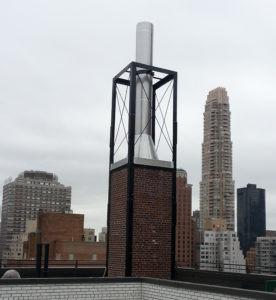With the high price of oil relative to gas and the phasing out of No. 6 heating oil by 2015, more and more property owners are converting their building's heating plants from oil to gas-burning systems. Owners and managers are often surprised to learn, however, that an oil-to-gas conversion usually requires changes to their chimney.
Most chimneys were built for oil heat, not gas. If this is the case with your building, a chimney liner—and possibly an extension or offset—will be needed to accommodate the new heating plant before initiating gas service. Burning natural gas produces acidic condensate, which can corrode the chimney's interior masonry. Chimney liners protect the flue from these particles and keeps toxic gas from infiltrating the building.
In RAND's latest Ask the Engineer column, we discuss what the installation of a chimney liner entails, including:
- Types of chimney liners
- When your chimney requires an extension or offset
- Code issues
- Design and cost considerations
- Expected timelines
- Special Inspections
A chimney liner and an extension or offset can add a considerable cost when a building converts from oil to gas, but the payoff is a safer heating plant and the potential for long-term savings on heating costs.
For more on chimney liners and extensions, read the full article and let us know if you have and comments or questions at info@nullrandpc.com or in the comments box below.
Peter Varsalona is RAND’s Principal and Vice President and the head of the firm’s Mechanical, Electrical, and Plumbing team.

